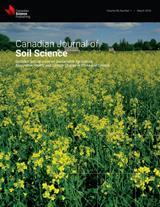Soil phosphorus (P) availability may be impacted by management practices, thereby affecting plant P uptake and plant response to P amendments. The aim of this study was to determine the effects of long-term management on soil P pools and to assess the response of P bioavailability, plant growth, and P uptake to mineral versus manure P treatments. Soils were collected from plots under organic (ORG), organic with composted manure (ORG + M), conventional (CONV), and restored prairie (PRA) management. Italian ryegrass (Lolium multiflorum L.) seedlings were grown in the greenhouse for 106 d in soils amended with various rates of manure or mineral P. The ORG soil had lower concentrations of labile P (resin-P and NaHCO3-P) compared with the CONV and PRA soils, as determined by sequential P fractionation prior to planting. Ryegrass biomass (root + shoot) and shoot P uptake from soils receiving no P were significantly lower for the ORG than all other management systems. Although apparent P use efficiency of the whole plant was increased by low P rate in the ORG management system, the source of applied P, manure > mineral, only influenced Olsen test P.
How to translate text using browser tools
4 July 2019
Soil phosphorus bioavailability as influenced by long-term management and applied phosphorus source
Tandra D. Fraser,
Derek H. Lynch,
Ivan P. O’Halloran,
R. Paul Voroney,
Martin H. Entz,
Kari E. Dunfield
ACCESS THE FULL ARTICLE
It is not available for individual sale.
This article is only available to subscribers.
It is not available for individual sale.
It is not available for individual sale.
apparent P use efficiency
long-term management
manure P
mineral P
phosphorus





